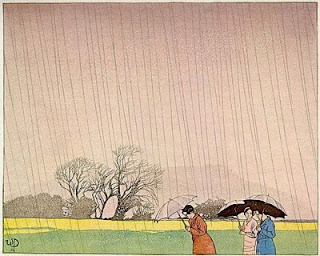My dear printmaking colleagues, there are times when you discover a rare treat, and such is the case of Canada’s son Walter Joseph Phillips. I embrace the lyricism of this man’s work and admire greatly his ability to bring light and breath to an inked up piece of paper. Truly, these images sing with life and profess Phillip’s love of his adopted homeland. There is much to see and immerse oneself into his landscapes. They are simultaneously subtle and vibrant, but one feels in his prints the rapture of a sunset or a gentle rain. I hope you enjoy these pieces and share them with your colleagues. They are worth a good, long look…..
Walter Joseph Phillips was an English-born, Canadian artist. He was born in 1884 in Barton-on-Humber, Lincolnshire, England. He first studied art at the Birmingham School of Art, then went to study art in South Africa and Paris. He eventually went to work as a commercial artist in Manchester and London, then from 1908 to 1911 served as art master at the Bishop Woodworth School in Salisbury, England.
In 1913, he and his wife, Gladys(Pitcher), emigrated to Winnipeg, Manitoba, where they lived for nearly thirty years. From 1915-18 he began to produce small prints and during the summers he taught art at University of Wisconsin.
During the Great Depression he was one of a handful of artists who made a living off of his work. During 1925-1935 his subject matter mainly dealt with life on the Canadian prairies Manitoba and Northwest Ontario, but in the mid 1940s he switched to making images of the Rocky Mountains.(He asked that his ashes be spread over the Rocky mountains because he loved them so.)
In 1940 he was asked to become Artist in residence at the Banff School of Fine Arts. He moved to Calgary the next year and taught art at the Institute of Technology & Art. In the late 1950s his eyesight began to fail, and he moved to Victoria in 1960 where he dies three years later at the age of 78.
Phillips is famous for his Japanese-style woodcuts. His work was not considered avant garde. In fact, far from it. He was sensitive to his environment and portrayed it with a gentle and poetic vision. There is a calm and peaceful feeling when one looks at his work. His work exemplified the British influence which prevailed in Western Canada at that time. Yet, the Japanese printmaking influence of the 1800s is present with his compositions and a reverence of natural environs, but moreso, a feeling of the work of James McNeill Whistler is deeply felt. The mood is delicately handled. His places are dreamy, sweet and quiet. One can feel at peace in this work, and you can understand how one is drawn to the light as it caresses the land, the trees and water. Phillips has given us city-dwellers, and those unfamiliar with the beauty of Canada, a taste for its tranquility, its majesty.
Permanent Collections:
National Gallery of Canada
The Winnipeg Art Gallery
Glenbow Museum – have an extensive collection and a research archive
Whyte Museum of the Canadian Rockies
Vancouver Art Gallery
The Pavilion Gallery in Winnipeg’s Assiniboine Park – have the most extensive collection, The Crabb Collection, comprising nearly 850 pieces.
His work was also collected in London, Washington D.C., New Jersey and Japan.
He was also a member of the Royal Canadian Academy of Arts.









No comments:
Post a Comment